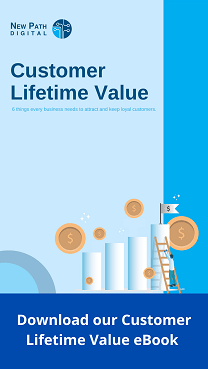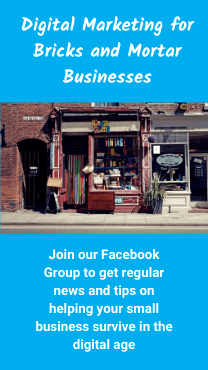In the digital age, conducting business without technology is virtually impossible. A key benefit of technology is it makes collecting and storing data easy. Data about your business, but more importantly, data about your customers. However, despite having access to data, many small retail businesses fail to use it to their advantage.
Data is more than information. Data is powerful when it is used to create insights and explain customer behavior. Creating a culture where data is seen as an asset is essential for small businesses to win. You must become “data-driven” i.e. make decisions based on data rather than gut instinct.
But how and where do you start? A lot of people stumble with the first step: they do some research, see a large number of new and confusing concepts, get scared off and give up. To shed a light on this problem, let’s look at some of the key questions and issues.
Why is data so important?
You may have heard of machine learning and artificial intelligence. These are being used more and more by big businesses to make decisions. While most small businesses don’t need this level of complexity, what they have highlighted is the importance of understanding customers’ habits through data and analysis. They also demonstrate how responding to insights is critical to success.
Big businesses such as Google, Amazon and Facebook use data to create a competitive advantage and increase their influence. By collecting data on individual’s searches, their relationships and shopping habits, data became their superpower.
What do we mean by data?
But there are many different types of data. Let’s have a look at what we mean by data.
The first, and the most obvious type of data is Personal Information, such as name, age, address and email. A word of warning about Personal Information – there are strict regulations on how businesses can collect, keep and use personal data. More information can be found here.
The second type of data is sales data – the revenue and products sold to each customer.
The third type of data is behavioural data. This includes things like website visits, Facebook likes, email opens and clicks.
Small businesses often have more data than they think. But it might be in many different systems. Take for example an independent bike shop, they typically have a Point of Sale system and an email marketing tool, both with valuable customer data.
To fully leverage data, you need to know what you have. We recommend you do a data audit – write a list of all the customer data you collect and where it is stored.
What to do with your data
The first thing to do with customer data is create customer segments or customer groups. For example, high v low value customers, or groups based on the products they buy. It doesn’t have to be too detailed. Once you have segments, create different marketing messages for the different groups.
Facebook is a platform that allows you to do this easily. You might have one message or image for males and one for females. Or you might have one message for people who live close to you and another for those further away. The key is to think about what is most relevant for the group you are targeting.
How do I use data to measure if my marketing is working?
The next thing you should do with data is measure marketing performance. This includes things like website traffic, social media engagement, email open rates etc. When you look at this in detail, you can see what works and what doesn’t – and change your marketing plans accordingly.
One important metric is Customer Lifetime Value or CLV. This is the total value each customer brings to your business over their entire relationship with you.
How to get started
The time when data and technology was only for nerds and geeks is gone, but you shouldn’t be overwhelmed by it.
Start to be data-driven by taking these easy actions:
- Treat data as an asset – protect it and value it
- Pull together a list of all the data you have in your business, how you collect it and where it is stored
- Create segments of customers based on common traits or behaviours.
- Think about other data you might need – and work out how to collect it.
- Generate insights into customer behaviour from the data – deeply understand who your customers are and why they do what they do.
I believe there are 6 things small businesses need to do in order to sell more and keep customers longer in the digital age:
- Know your Customer
- Understand their Journey
- Provide relevant Content
- Use multiple Touchpoints
- Collect useful Data
- Install efficient Systems
When they work well together, you can maximise the Lifetime Value of your customers.
If you would like to know more about ways to increase the Lifetime Value of your customers, join our Facebook Group – Digital Marketing for Bricks and Mortar Businesses. Use this forum to ask questions and receive regular updates on how to grow your business through digital marketing.



